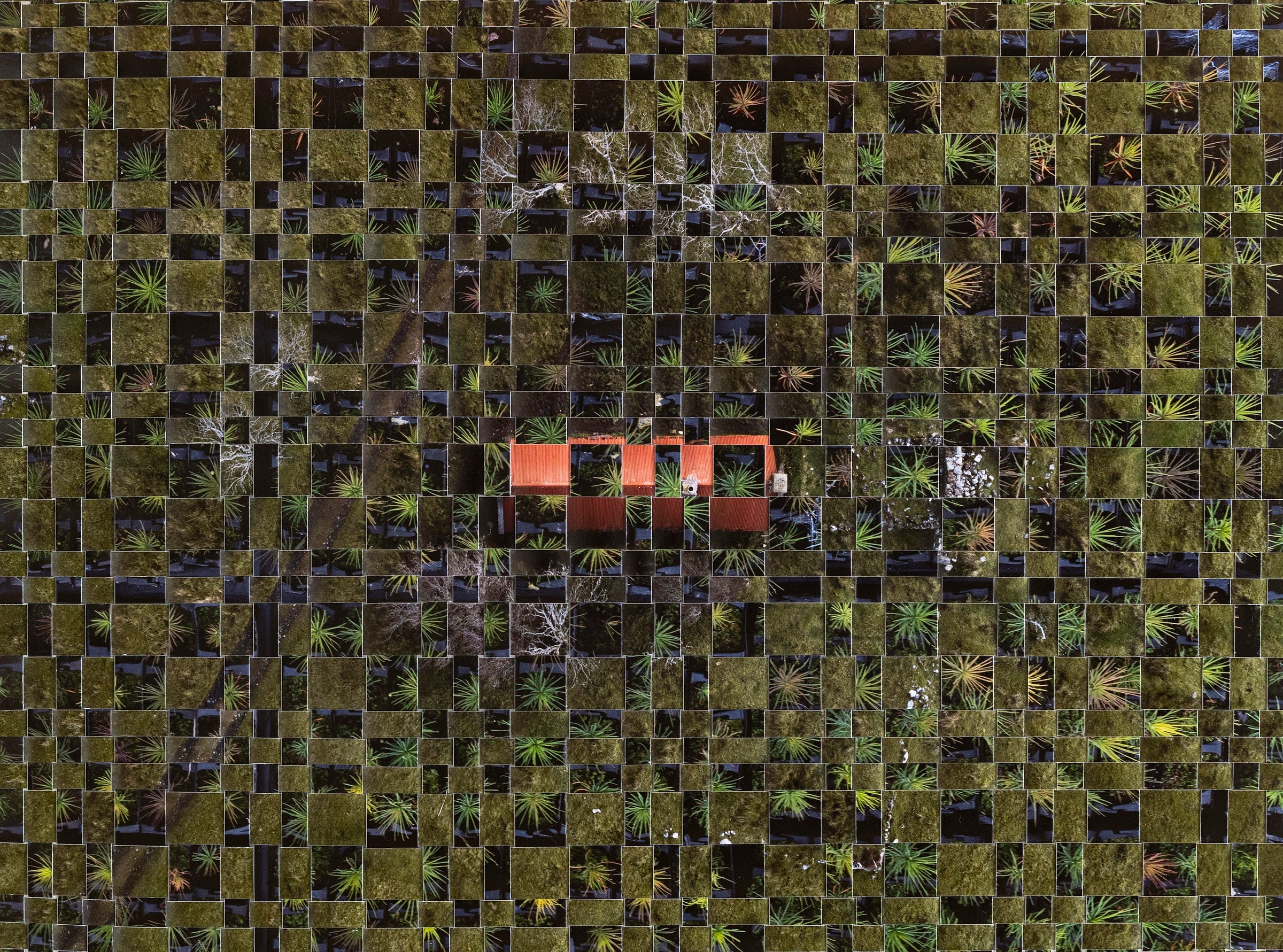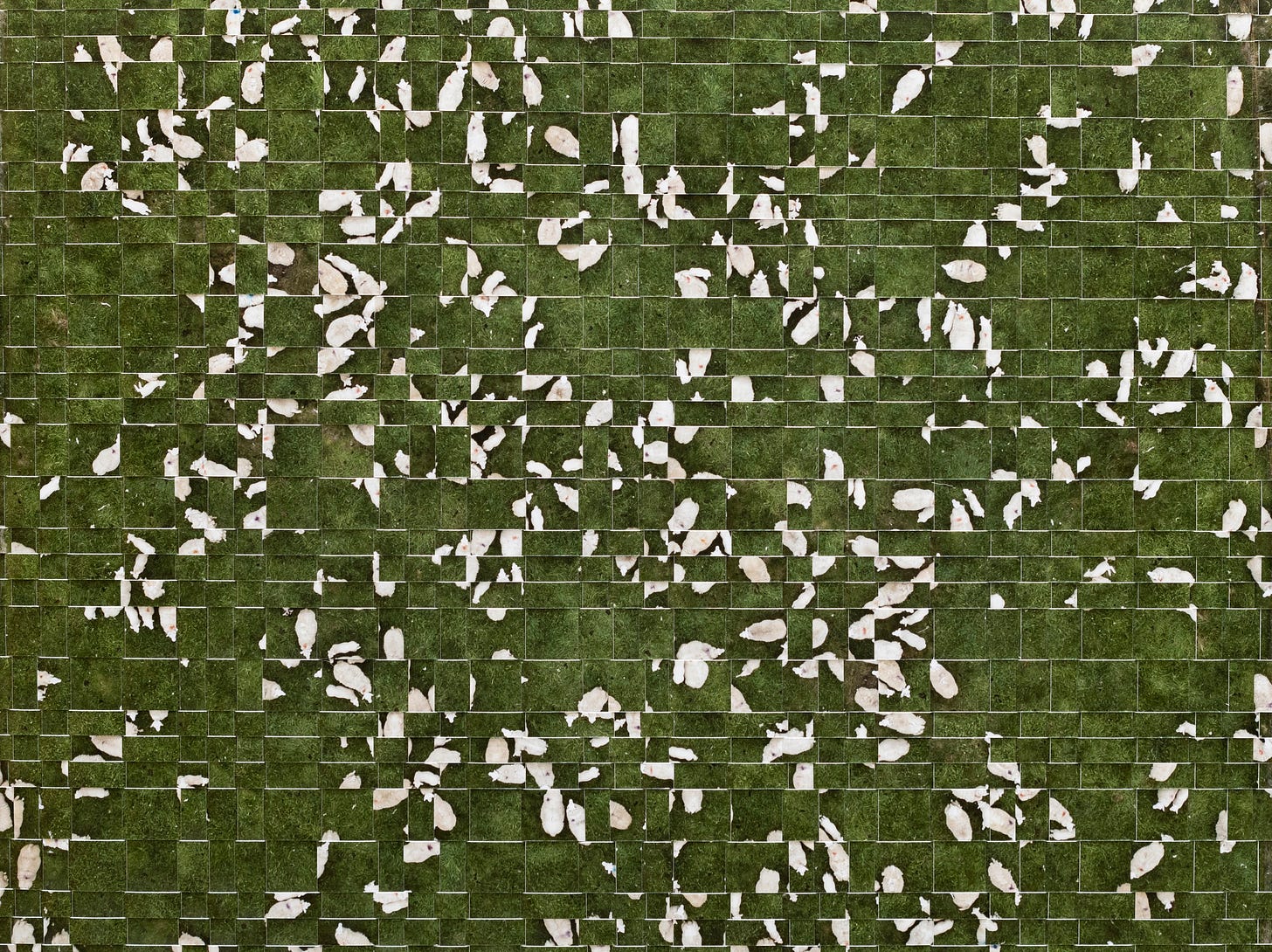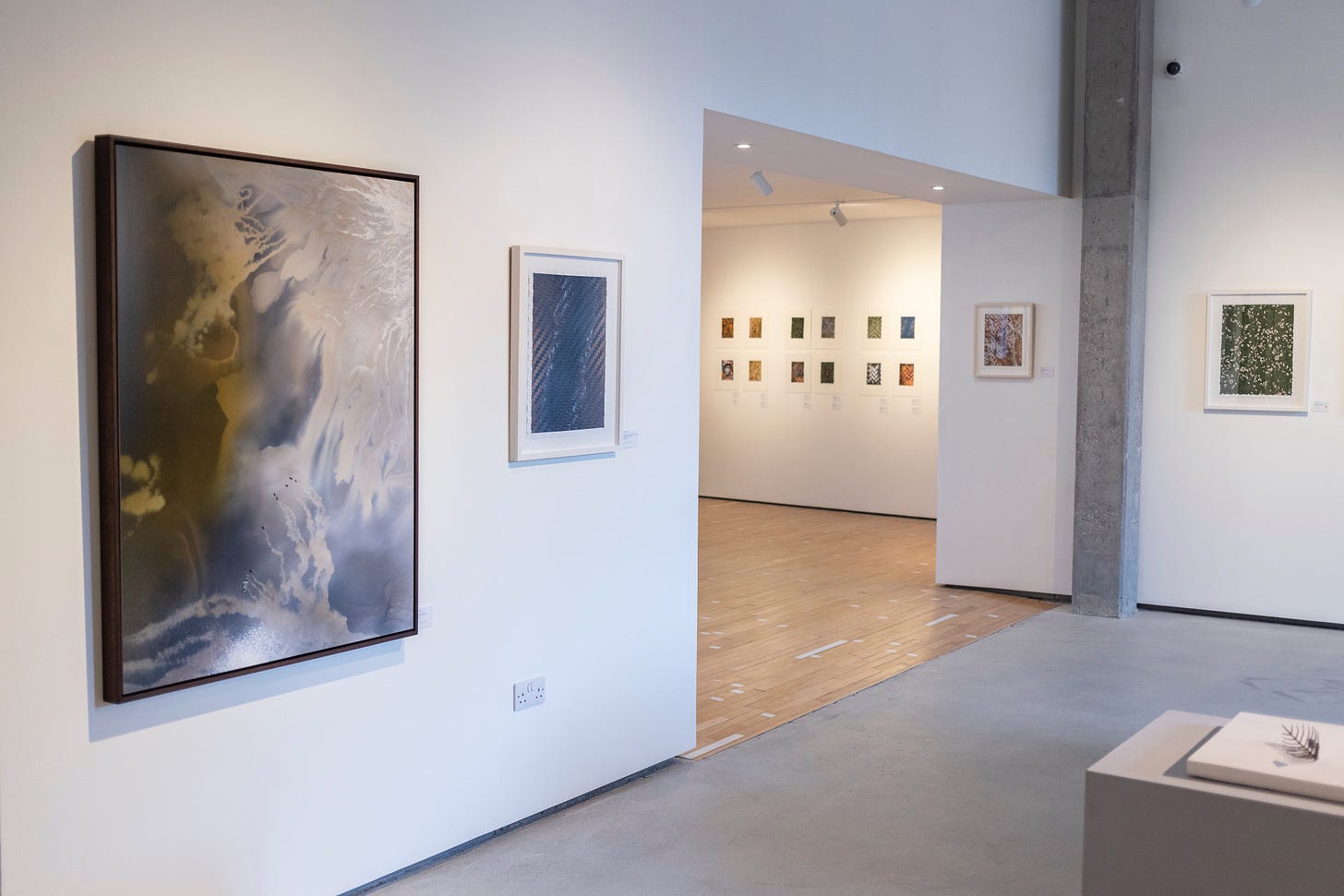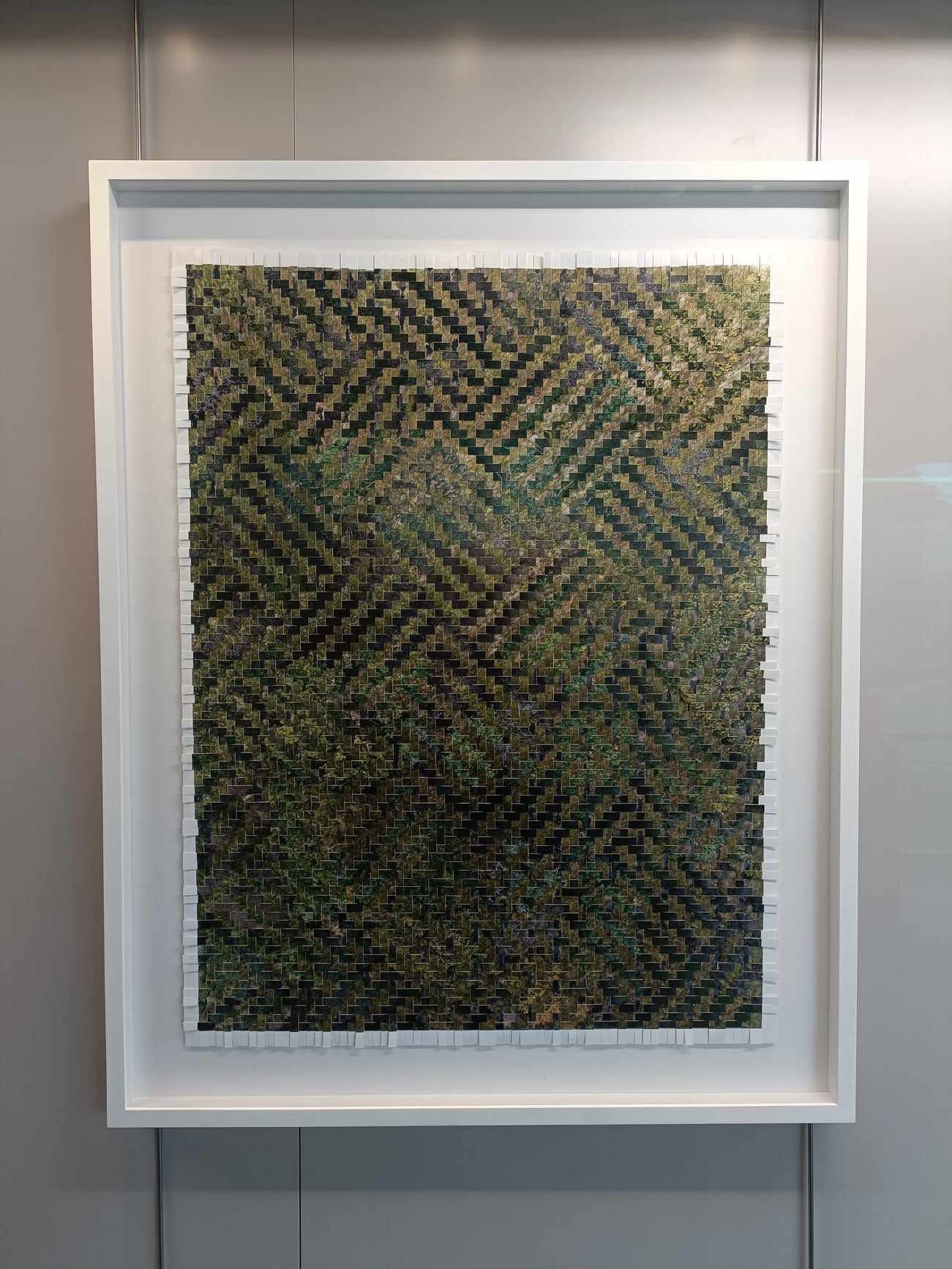Fabricated Land
On Dispossession and Drones
Skye, Invermoriston (Ancient), 2023. A photoweave depicting a cleared cottage on the Isle of Skye and a miniature forest in pine seedlings at a rewilding site further north.
Photography was too new a medium to document much of the Scottish Clearances (1750–1860), the most significant period in the country’s recent history, and one during which, historian T. M. Devine writes, “the entire fabric of society was recast” by decades of enforced migration.
In my ongoing body of work Fabricated Land, I combine documentary photography with a radical approach to print-making to explore a new visual language. I used drones to create abstract aerial swatches of the landscapes, shot straight down to a standardised typology. Prints of these images are then sliced and woven together into new works. The finished weaves offer a new topography of Scotland in response to recent research and ongoing discussion of land ownership, dispossession, rewilding and clearance.
Fabrication and Land
With industrialisation in the late 18th century, a new nation was built on a mono-economy of textile production. Rural populations moved to towns, replaced within the landscape by sheep brought in to supply the burgeoning textile industry with wool, while their meat fed the miners who supplied other industries with fuel. Wool from hilltop sheep was woven by the newly urbanised populations into uniform grids – geometric representations of wilderness domesticated.
Scattered Flock (Ancient), 2023. A modern-day sheep pasture in the Scottish Borders, where the Clearances began. Ideas of enclosure and improvement swept northwards from the Lowland to the Highlands.
In this era, tartan and tweed came to represent a new idealised landscape and identity in the works of romantic writers and painters. The rise of the Highland sporting estate, as depicted in paintings such as Sir Edwin Landseer’s Monarch of the Glen, further cemented the global vision of Scotland as a place of wind-swept moors inhabited by stags and only the occasional hunter.
(Above) Monarch of the Glen in the National Galleries of Scotland, Edinburgh
(Below) The backdrop to Landseer’s famous painting; Glen Feshie is also the flagship for the reimagining of the Highlands.
Writing a modern chapter on the role of textiles in the refashioning of Scotland’s landscape today is the UK’s largest private landowner, Danish billionaire Anders Povlsen, who has made his fortune in the clothing industry. His Glen Feshie estate is the flagship for the controversial rewilding movement, which aims to return cleared moorland to forest and draws criticism from sporting-estate landowners and local inhabitants over issues such as the need for large-scale culling of red deer and the preservation of traditional rural livelihoods. Two centuries ago, Landseer’s painting of Glen Feshie helped define the Scottish sporting-estate as the new normal. Today, this same glen is the place where innovation is unfolding and the land is once again changing.
Weaving
For each photo, I begin with historical research, pursuing narratives hidden within the land. After visiting sites and making images with drones, the work is printed and the weaving begins. I cut and hand-weave together printed photographs, starting with small study 6.5 x 8.5 inches (16.5cm x 21.5cm) prints following standard tartan and tweed patterns. The finished weaves are scaled-up versions of these studies; the most recent is 28.5 x 38.5 inches (72cm x 98cm). The aim is for each work to be a unique, visually arresting image that highlights the ways in which history, culture, geography and national identity are interwoven in our reading of a landscape. You can watch process in this video.
Fabricated Land was first shown at Browns Gallery in Inverness, September 2023. Original aerials images, large weaves and study weaves are visible. The new large weaves are closer to the size of the aerials images in the foreground of this photo.
Personal Thread
Researching my own family history from the time of the Lowland Clearances, I was able to pinpoint the time when my Scottish Borders ancestors were dislocated from their rural lives. Their shifting identity as farm labourers to factory workers to fabric designers within a global economy tells the story of my country. Weaving together photographs is in part a way for me to gather the fragments of these family memories and re-embed them within images of the landscape.
This ongoing series cuts across many personal interests: environmental, social, historical, religious and artistic. The first of the new larger weaves is on show in the Pathfoot building at the University of Stirling.
I would love to hear any of your questions about the process of making the works in Fabricated Land. The original weaves are available for purchase; please contact me for more information. Limited-edition prints from the first weaves can be ordered here.
All rights reserve for words and images © Kieran Dodds









